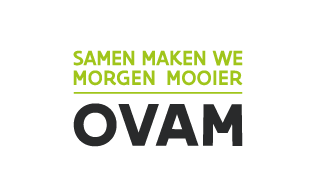Sharing goods: a route to a more circular economy?
donderdag 13 december 2018
The circular economy promises a solution to many of society's problems: less reliance on scarce resources, a reduction of waste, a reduction in GHG emissions, increased employment and business opportunities, etc. Such a panacea does not come without adaptation, however, and not just from businesses and policy-makers, but from the general population as well.
To realise the circular economy, we must reconcile the tensions between the goals of increasing prosperity and a reduction in resource use and pollution. The production, consumption and disposal of the vast majority of goods incur one or both of these environmental costs. The only way to increase the distribution of goods while reducing the environmental impact is to increase the efficiencies of production, use and disposal to such an extent that we can offset the environmental costs.
There are many ways to increase efficiency. Consider renewable energy: this produces the energy required for the production and consumption of many goods that affect our well-being at a much lower environmental impact than energy produced from fossil fuels. This is a technical change, directly affecting the way goods are produced. But what about changes to human behaviour? Could we also change the way we live, to live a more "efficient" life? This is where the sharing economy could help.
Think of the amount of goods that are near you right now that are idle. Unless you are cooking an elaborate meal as you read this, there will likely be a kettle that is not boiling water, an oven not cooking a lasagne, a frying pan not making an omelette. If we were to log the amount of time a product spends being used then we may be shocked at how little we use the things we own. Clothes, TVs, books, tools, bikes, cars ... these are all products that, to some extent or another, sit idle for the vast majority of the time. How can we correct this?
Product sharing is an obvious solution, and cars are perhaps the most obvious application. A study from the UK found that cars spend 96% of their existence idle [1]. They take up a huge amount of space (parked or not), depriving children of places to play and cyclists of a safe operating space. They also deprive us of a more pleasant environment: just think how many trees, bushes and flowers could be planted if we took those cars off our streets! Sharing cars may allow us to maintain their function (getting from A to B), while reducing resource use by minimising the time a car spends idle.
However, as ever, there are caveats. Sharing goods might make the good cheaper to use: by only paying for a good when you use it, you may substantially reduce the amount you pay compared to ownership (if you are an infrequent user and the good comes with a high purchase cost). For example, in an online survey of car-sharing users in Flanders and Brussels, between 29% and 47% of users surveyed would not own a car. As a result, any use of a car that would otherwise not occur without car-sharing adds to, rather than reduces, the environmental impact. Whether such an offsetting effect is sufficient to eliminate the gains from car-sharing depends on the extent of the behavioural change of others.
To enable the circular economy, producers and consumers must change their behaviour. Producers must reduce waste and increase efficiencies, while consumers must adapt to a different way of consuming. Sharing goods is undoubtedly helpful, but it alone may not cause sufficient behavioural change. Policies that complement sharing, e.g. providing better guarantees, changing taxes, subsidising start-ups etc., but that also reduce offsetting rebound effects will likely be necessary to realise the full benefits of sharing.

.png)






